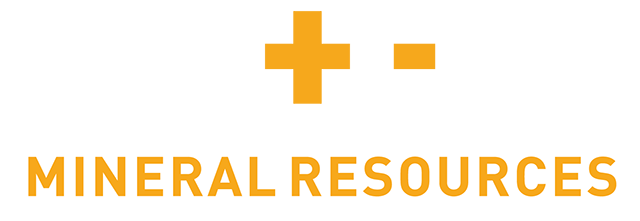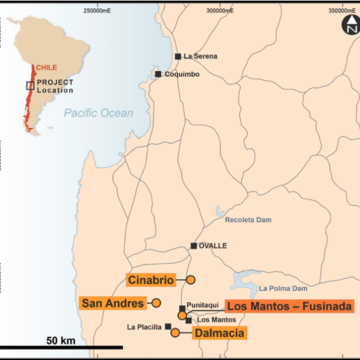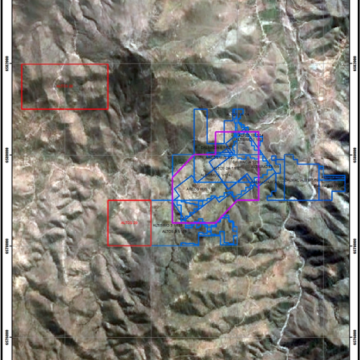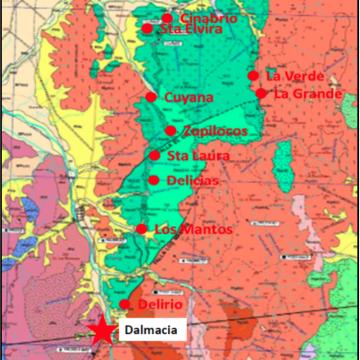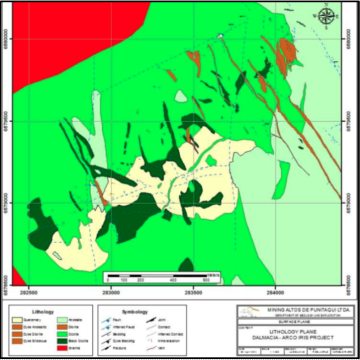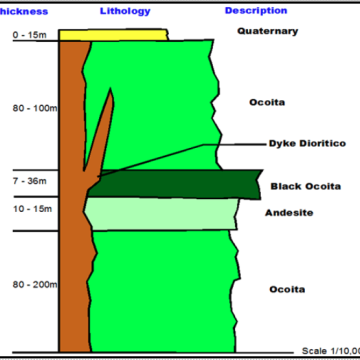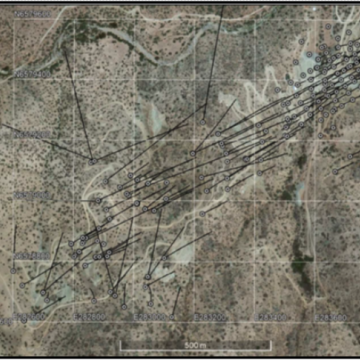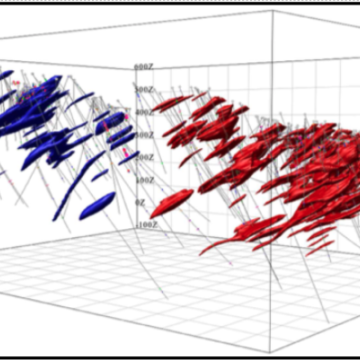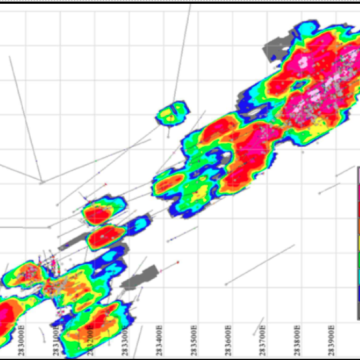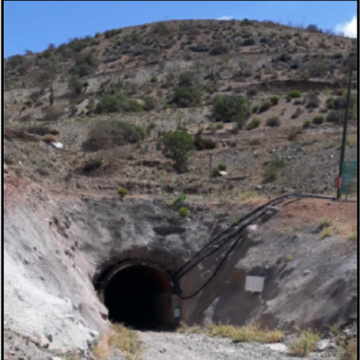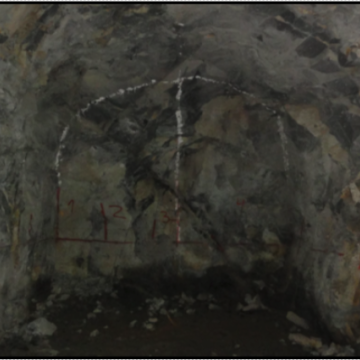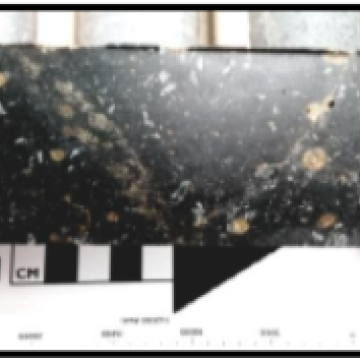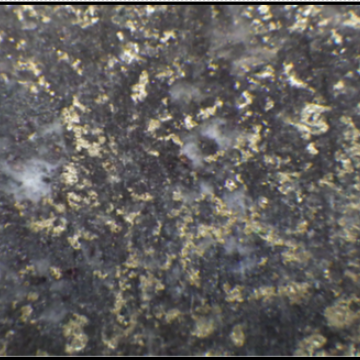Battery Mineral Resources (“BMR”) 100%-owned Punitaqui copper mine operation leverages all necessary fixed assets and infrastructure, excellent road access, ready availability of water, existing power lines, operational permits in place, and widespread mineralization. Punitaqui boasts a nine-plus year operating history.
After acquiring the assets in March 2021, BMR begin redevelopment of the operation and on May 13th, 2024, BMR announced the resumption of copper concentrate production.
The timeline from first fresh mine feed through the mill to reaching planned capacity is expected to require approximately nine months, reaching a run rate of ~90,000 tonnes per month. BMR expects that the Punitaqui full annual copper production rate will be in the range of 19 million to 23 million pounds of copper in concentrate with an operating margin of $35 million to $50 million at current copper prices.
Cinabrio is the original underground mine which was the source of feed to the copper concentrating plant for over eight years and has remaining ore to be processed. The San Andres zone has existing underground access and copper mineralization up to 30 meters wide. The Dalmacia zone also has underground access and exhibits copper mineralization widths up to 50 meters. Regional targets including the Cinabrio Norte zone offer near-term “blue sky” exploration and district-scale potential for BMR.
While the Cinabrio and San Andres mines are reaching full production, BMR will continue processing mill feed from outside sources and advancing toward its newly discovered Cinabrio Norte zone, to commence production of mill feed from that zone in H2 2025.
As part of the ongoing operational readiness during 2024, BMR is executing underground infill and extensional drilling at San Andreas and Cinabrio. The drilling program is designed to further define areas that could be included in near-term mine sequencing and for grade control purposes. BMR looks forward to reporting the results of this drilling during the course of the year.
Battery Mineral Resources (“BMR”) 100%-owned Punitaqui copper mine operation leverages all necessary fixed assets and infrastructure, excellent road access, ready availability of water, existing power lines, operational permits in place, and widespread mineralization. Punitaqui boasts a nine-plus year operating history.
After acquiring the assets in March 2021, BMR begin redevelopment of the operation and on May 13th, 2024, BMR announced the resumption of copper concentrate production.
The timeline from first fresh mine feed through the mill to reaching planned capacity is expected to require approximately nine months, reaching a run rate of ~90,000 tonnes per month. BMR expects that the Punitaqui full annual copper production rate will be in the range of 19 million to 23 million pounds of copper in concentrate with an operating margin of $35 million to $50 million at current copper prices.
Cinabrio is the original underground mine which was the source of feed to the copper concentrating plant for over eight years and has remaining ore to be processed. The San Andres zone has existing underground access and copper mineralization up to 30 meters wide. The Dalmacia zone also has underground access and exhibits copper mineralization widths up to 50 meters. Regional targets including the Cinabrio Norte zone offer near-term “blue sky” exploration and district-scale potential for BMR.
While the Cinabrio and San Andres mines are reaching full production, BMR will continue processing mill feed from outside sources and advancing toward its newly discovered Cinabrio Norte zone, to commence production of mill feed from that zone in H2 2025.
As part of the ongoing operational readiness during 2024, BMR is executing underground infill and extensional drilling at San Andreas and Cinabrio. The drilling program is designed to further define areas that could be included in near-term mine sequencing and for grade control purposes. BMR looks forward to reporting the results of this drilling during the course of the year.
Punitaqui - Dalmacia
Key Facts
Overview
The Dalmacia target is located in the southern portion of the Punitaqui area about six kilometers south of the Punitaqui processing plant. The first drilling in this area occurred in 1993-1994 when 49 reverse circulation (“RC”) holes totaling 9,972m were completed. Historic exploration drilling at Dalmacia North has been completed at a grid spacing of 25m x 25m and 15m x 15m at Dalmacia South. In total, 229 drill holes (98 RC holes and 131 diamond core holes) have been drilled by our predecessors for a total of 53,294m.
The geological setting of the Dalmacia target is different from both the Cinabrio mine and San Andres target which are located 20 kilometers to the north. Dalmacia is situated within a roof-pendant of volcanic rocks, with minor calcareous intercalations of Middle to Upper Jurassic age. This volcano-sedimentary complex is intruded by younger aged granites located in a reverse fault. Copper, silver, and gold mineralization is related to regional structures and deformation zones, developed mainly in the contacts between granitoids and volcano-sedimentary rocks. The copper-gold mineralization occurs as veins, fracture infilling and disseminated oxides and sulphides. The known strike length of the northeast-southeast trending mineralized zone is at least 1,500m and up to 300m wide with depths greater than 500m.
At Dalmacia, oxide mineralisation includes Chrysocolla, Atacamite, Neotocite and Cuprite. Primary mineralization consists of Chalcopyrite and Bornite with Pyrite. Secondary mineralisation includes chalcocite and bornite. The upper portion of the Dalmacia target is accessed via a portal and a limited underground ramp and level development.
The Dalmacia Phase 1 infill and step-out drill program was completed by BMR in H1 2022 and comprised 9,757m in 52 diamond drill holes. This Phase 1 program was designed to confirm mineralized zones identified by previous drilling programs and expand these mineralized zones to the north and south, along strike and at also depth.
Historical Background
The early history of the Dalmacia project is not well documented. The first drilling occurred in 1993-1994 when 49 reverse circulation “RC” holes (9,972m) were completed. In 2007, Compania Minera Punitaqui carried out ground magnetics and induced polarization surveys followed by an RC drilling program (49 holes / 11,473m).
Between 2011 – 2018 at total of 131 diamond core drillholes were completed at Dalmacia for a total of 31, 849.55m. The historic Dalmacia exploration drilling has been completed at a grid spacing of 25m x 25m in the north and 15m x 15m in the south. In total, 229 drillholes (98 RC holes and 131 DC holes) have been drilled for a total of 53,294.55m with 35,201 samples analysed by our predecessors. The upper portion of the Dalmacia target is accessed via a portal and a limited underground ramp and level development.
Geology & Mineralization
The Dalmatia zone is located within a roof-pendant of volcanic rocks, with minor calcareous intercalations of Middle to Upper Jurassic age. This volcano-sedimentary complex is intruded by 105Ma - 130Ma aged granitoids located in a reverse fault.
The Dalmacia copper-silver-gold mineralization is hosted in the Agua Salada Complex, consisting of andesites with white phenocrysts, and in ocoites (porphyritic andesites) with black phenocrysts. The ocoites are conformable to stratigraphy (sill-type) and in plan show an elliptical to sub-circular morphology.
Copper-silver-gold mineralization is interpreted to be related to regional structures and deformation zones, developed mainly in the contacts between granitoids and volcano-sedimentary rocks. The mineralization at Dalmacia is hosted in andesites, and in andesitic porphyry dykes with both black and white phenocrysts. The copper-silver-gold mineralization is structurally controlled and occurs as veins, fracture infillings and disseminated oxides and sulphides. The known strike length of the mineralised zone is at least 1500m and up to 300m wide with depths at least 500m vertical extent.
At Dalmacia, oxide mineralization includes chrysocolla, atacamite, neotocite and cuprite. Primary sulphide mineralisation consists of chalcopyrite and bornite with pyrite. Secondary mineralization includes chalcocite and bornite. Higher grade copper values are associated with bornite bearing mineralized zones.
Current Exploration
An infill and step-out Phase 1 drill program has been completed at Dalmacia. The Phase 1 Dalmacia drill program was designed to confirm mineralized zones identified by previous drilling programs and expand these mineralized zones to the north and south, along strike and at depth. A total of 9,757m were drilled in 52 diamond drill holes as part of the Phase 1 drill program.
Detailed mine planning is well advanced to commence underground mining at Dalmacia, expected in 2023 or in early 2024. Planning for a Phase 2 RC drill program to upgrade resources and conduct even more detailed mine planning is in progress. Dalmacia is scheduled to be the fourth zone mined as part of the restart of mine operations at Punitaqui.
